Abstract
The effects of waterlogging the soil on leaf water potential, leaf epidermal conductance, transpiration, root conductance to water flow, and petiole epinasty have been examined in the tomato (Lycopersicon esculentum Mill.). Stomatal conductance and transpiration are reduced by 30% to 40% after approximately 24 hours of soil flooding. This is not due to a transient water deficit, as leaf water potential is unchanged, even though root conductance is decreased by the stress. The stomatal response apparently prevents any reduction in leaf water potential. Experiments with varied time of flooding, root excision, and stem girdling provide indirect evidence for an influence of roots in maintaining stomatal opening potential. This root-effect cannot be entirely accounted for by alterations in source-sink relationships. Although 1-aminocyclopropane-1-carboxylic acid, the immediate precursor of ethylene, is transported from the roots to the shoots of waterlogged tomato plants, it has no direct effect on stomatal conductance. Ethylene-induced petiole epinasty develops coincident with partial stomatal closure in waterlogged plants. Leaf epinasty may have beneficial effects on plant water balance by reducing light interception.
Full text
PDF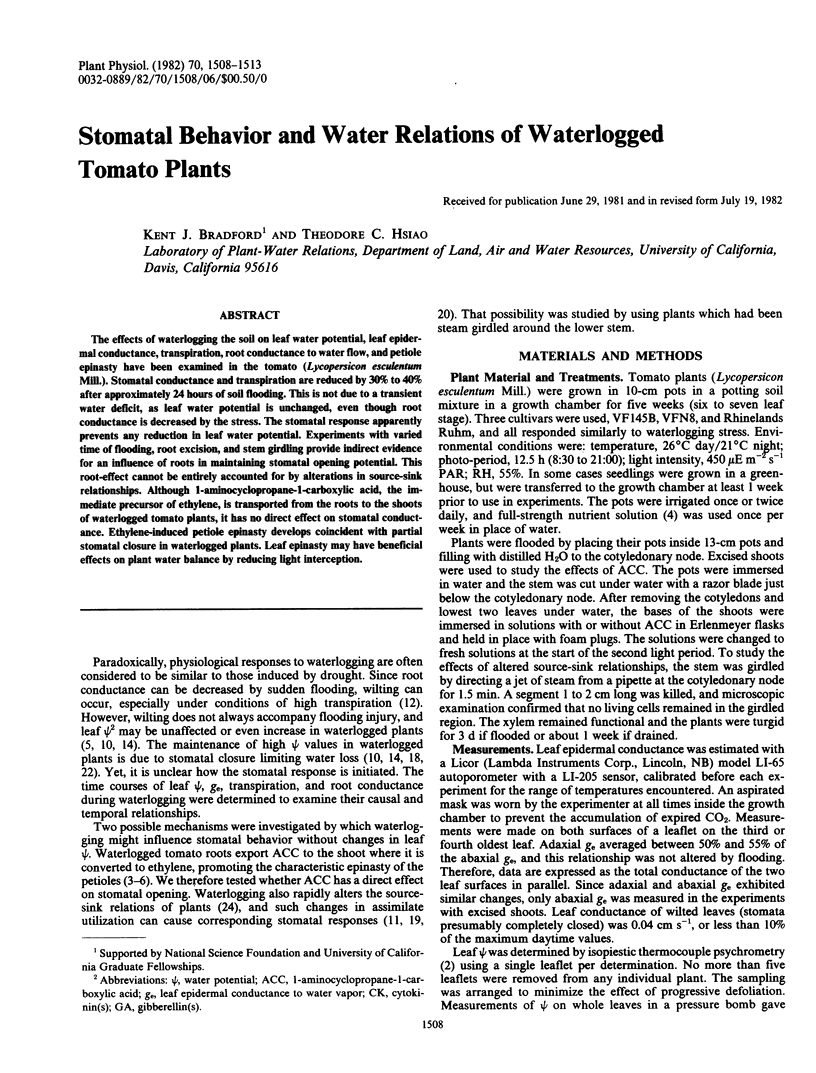
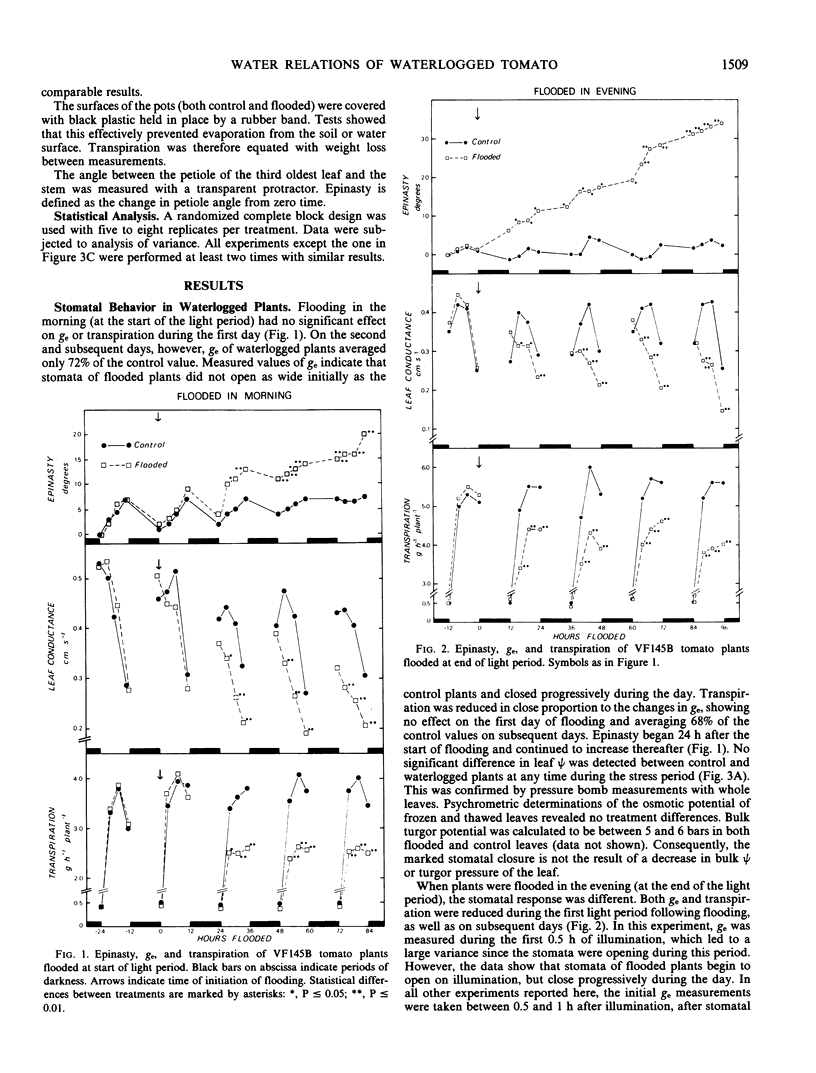
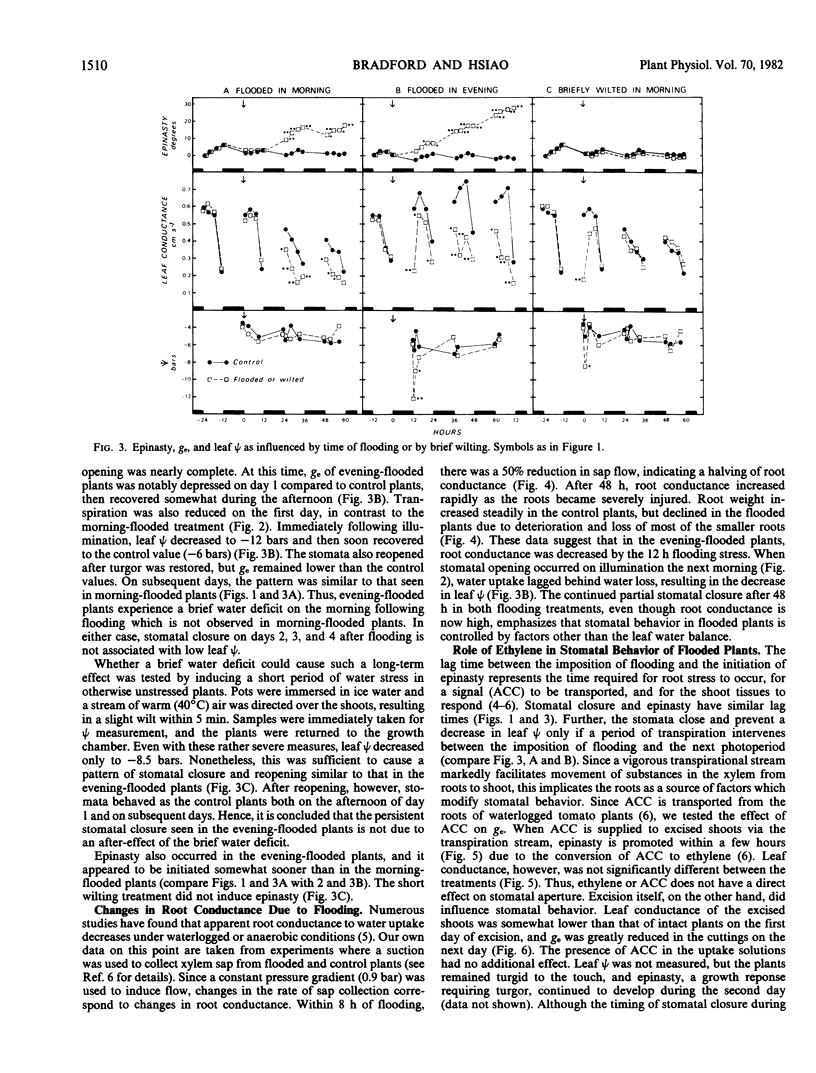
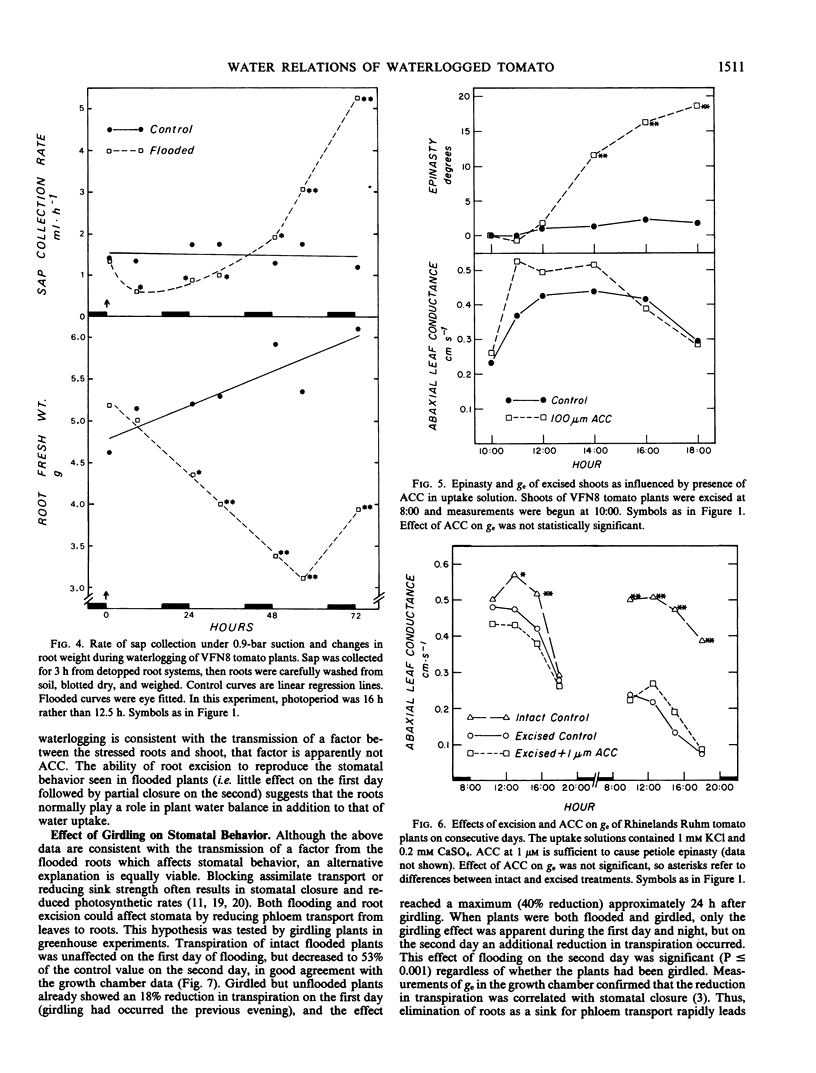

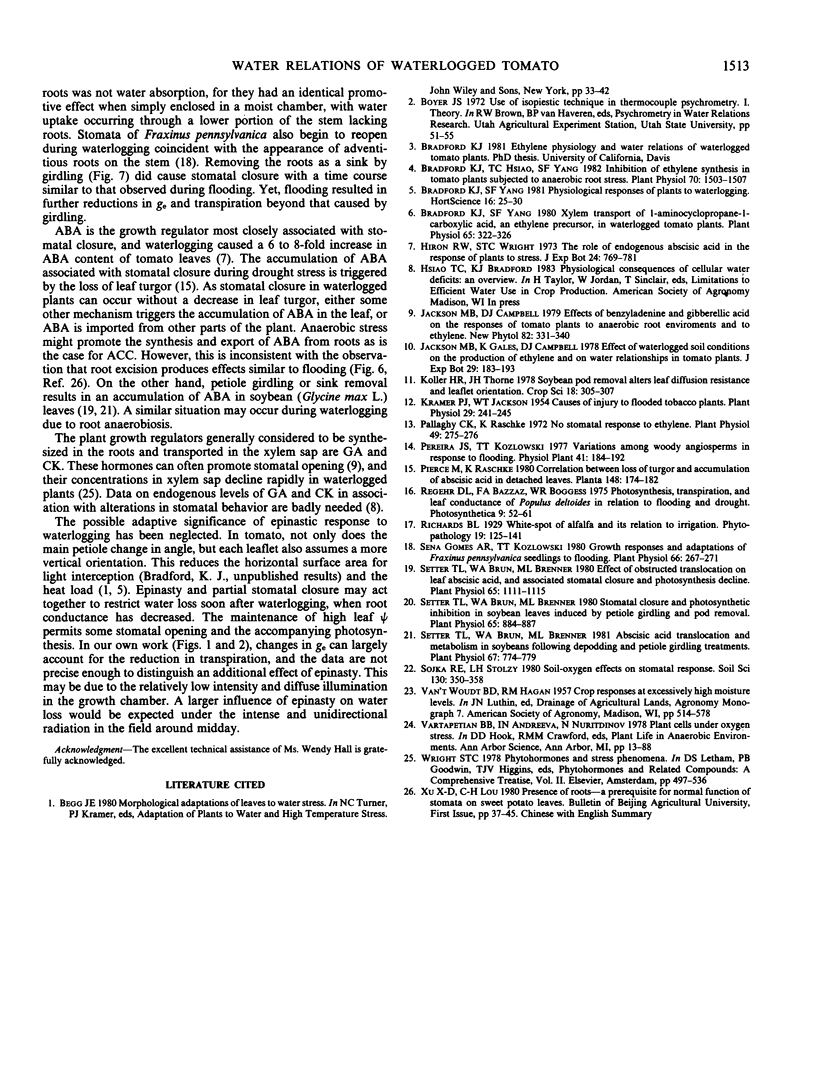
Selected References
These references are in PubMed. This may not be the complete list of references from this article.
- Bradford K. J., Hsiao T. C., Yang S. F. Inhibition of ethylene synthesis in tomato plants subjected to anaerobic root stress. Plant Physiol. 1982 Nov;70(5):1503–1507. doi: 10.1104/pp.70.5.1503. [DOI] [PMC free article] [PubMed] [Google Scholar]
- Bradford K. J., Yang S. F. Xylem Transport of 1-Aminocyclopropane-1-carboxylic Acid, an Ethylene Precursor, in Waterlogged Tomato Plants. Plant Physiol. 1980 Feb;65(2):322–326. doi: 10.1104/pp.65.2.322. [DOI] [PMC free article] [PubMed] [Google Scholar]
- Gomes A. R., Kozlowski T. T. Growth Responses and Adaptations of Fraxinus pennsylvanica Seedlings to Flooding. Plant Physiol. 1980 Aug;66(2):267–271. doi: 10.1104/pp.66.2.267. [DOI] [PMC free article] [PubMed] [Google Scholar]
- Kramer P. J., Jackson W. T. Causes of Injury to Flooded Tobacco Plants. Plant Physiol. 1954 May;29(3):241–245. doi: 10.1104/pp.29.3.241. [DOI] [PMC free article] [PubMed] [Google Scholar]
- Pallaghy C. K., Raschke K. No stomatal response to ethylene. Plant Physiol. 1972 Feb;49(2):275–276. doi: 10.1104/pp.49.2.275. [DOI] [PMC free article] [PubMed] [Google Scholar]
- Setter T. L., Brun W. A. Abscisic Acid Translocation and Metabolism in Soybeans following Depodding and Petiole Girdling Treatments. Plant Physiol. 1981 Apr;67(4):774–779. doi: 10.1104/pp.67.4.774. [DOI] [PMC free article] [PubMed] [Google Scholar]
- Setter T. L., Brun W. A., Brenner M. L. Effect of obstructed translocation on leaf abscisic Acid, and associated stomatal closure and photosynthesis decline. Plant Physiol. 1980 Jun;65(6):1111–1115. doi: 10.1104/pp.65.6.1111. [DOI] [PMC free article] [PubMed] [Google Scholar]
- Setter T. L., Brun W. A. Stomatal closure and photosynthetic inhibition in soybean leaves induced by petiole girdling and pod removal. Plant Physiol. 1980 May;65(5):884–887. doi: 10.1104/pp.65.5.884. [DOI] [PMC free article] [PubMed] [Google Scholar]


